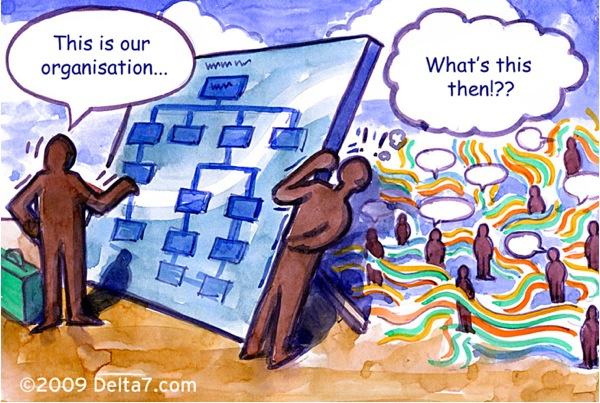Blog
Subscribe
Join over 5,000 people who receive the Anecdotally newsletter—and receive our free ebook Character Trumps Credentials.
Categories
- Anecdotes
- Business storytelling
- Collaboration
- Communication
- Corporate Storytelling
- Culture
- Decision-making
- Employee Engagement
- Events
- Fun
- Insight
- Leadership Posts
- News
- Podcast
- Selling
- Strategy
Archives
- March 2024
- December 2023
- November 2023
- October 2023
- September 2023
- August 2023
- July 2023
- June 2023
- May 2023
- April 2023
Years
Strategic accelerators

Hierarchies are great at running established organisations but they are notoriously slow in reacting to major changes. Its not really a problem when your strategy and environment are stable or only changing slowly. But its a big problem when things are changing rapidly and in many cases discontinuously.
So, how can organisations effectively deliver their quarterly results and at the same time maintain their competitive advantage when faced with so much change?
The November 2012 edition of HBR includes an article by John Kotter titled ‘Accelerate’ [note: payment is required to access the full article] that poses a solution. Kotter advocates letting the formal ‘operating system’ (the hierarchy) run the day-to-day activities and creating a second operating system using the informal system to design and implement strategy.
Kotter argues that the formal structures and hierarchies in organisations are excellent for the day-to-day operation of the organisation and delivery of business results, but they are barriers to implementing strategies to adapt to changes. “…the old ways of setting and implementing strategy are failing us.” The formal structures and processes have difficulty even keeping up with changes, let alone getting ahead of them. Kotter points out that his ‘eight step change process‘, developed in the mid-90s, has a hard time producing results in a fast-moving world.
The majority of the article is focussed on a ‘new’ concept Kotter calls ‘Strategic Accelerators’. In effect, he is talking about using Communities of Practice/collaborative networks to tap into the power and agility of the informal capabilities of an organisation. The network of strategic accelerators complements the formal systems; it does not replace them. Collaborative networks are not a new concept, but Kotter’s application of them to the arena of strategy is very insightful.
Kotter’s article has crystallised a natural link between two of Anecdote’s core activities: Making Strategies Stick and our many years of work in helping organisations develop effective collaborative networks.
If you want to establish a network of ‘strategic accelerators’, our experience highlights some of the things you need to focus on:
- more leadership, less management – the network members are volunteers so they can’t be managed as conscripts. Networks require leadership that creates the conditions for them to succeed. Importantly, leadership support must be visible yet it does not require enormous effort. Here is an example of the effect of ‘being managed’ on a network
- follow the passion – network members have ‘day jobs’ so the amount of time they spend on network activities will vary. In essence, the effort they invest in the network is discretionary. The things that are most likely to get done are things they are interested in or passionate about
- invest in social capital – network activities require high levels of trust between members so attention is needed to activities that build better and deeper relationships. It can’t be ‘all work and no play’.
Networks of strategic accelerators can be developed purposefully and intentionally. To do so requires paradigms of ‘control’ to be replaced by ’empowerment and autonomy’. Kotter notes that if you succeed “the network and the accelerators can serve as a continuous and holistic change function – one that accelerate momentum and agility because it never stops. They impart an kind of ‘strategic fitness'”.
 About Mark Schenk
About Mark Schenk
Mark works globally with senior leadership teams to improve their ability to communicate clearly and memorably. He has been a Director of Anecdote since 2004 and helped the company grow into one of the world’s leading business storytelling consultancies. Connect with Mark on: